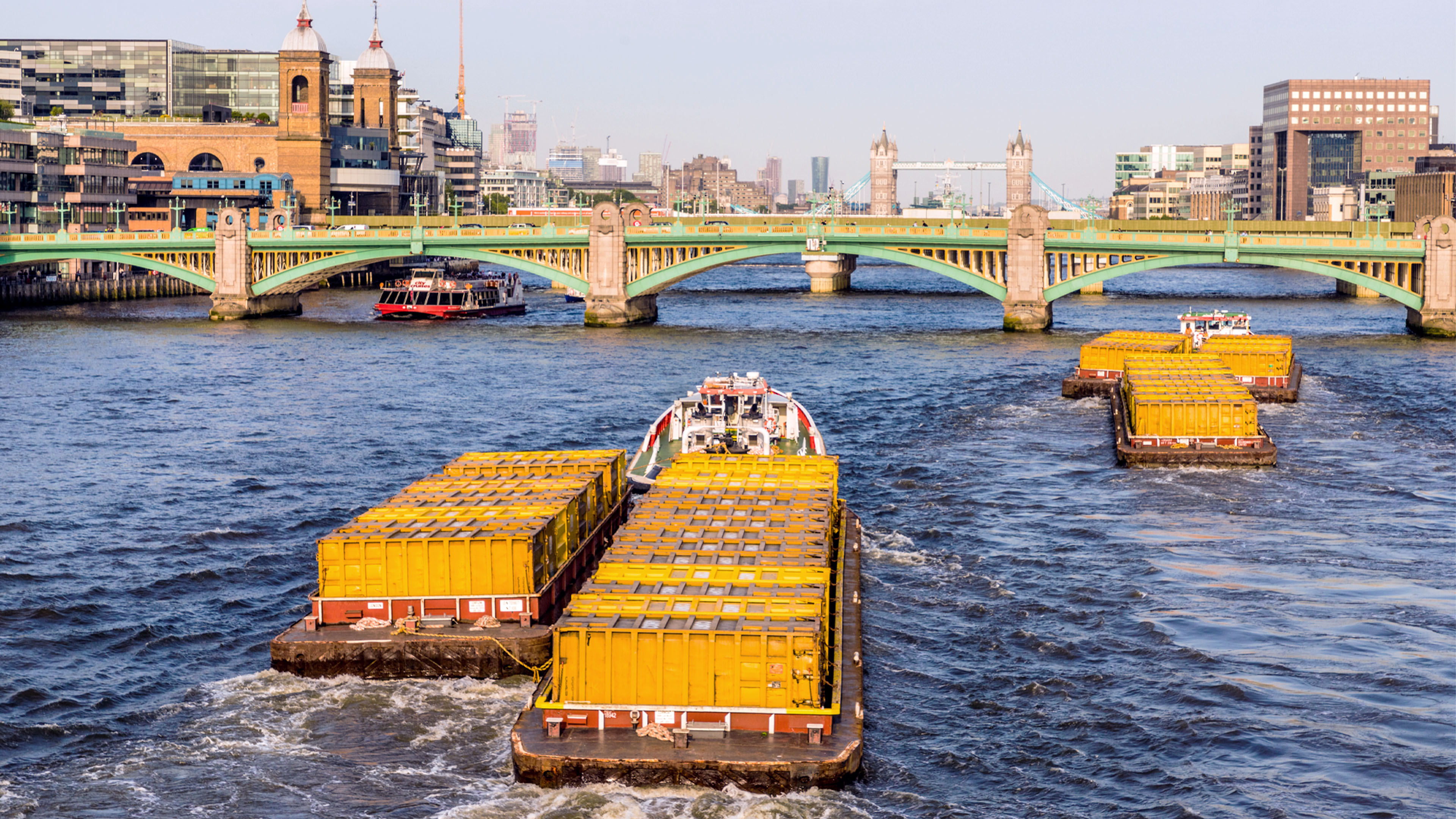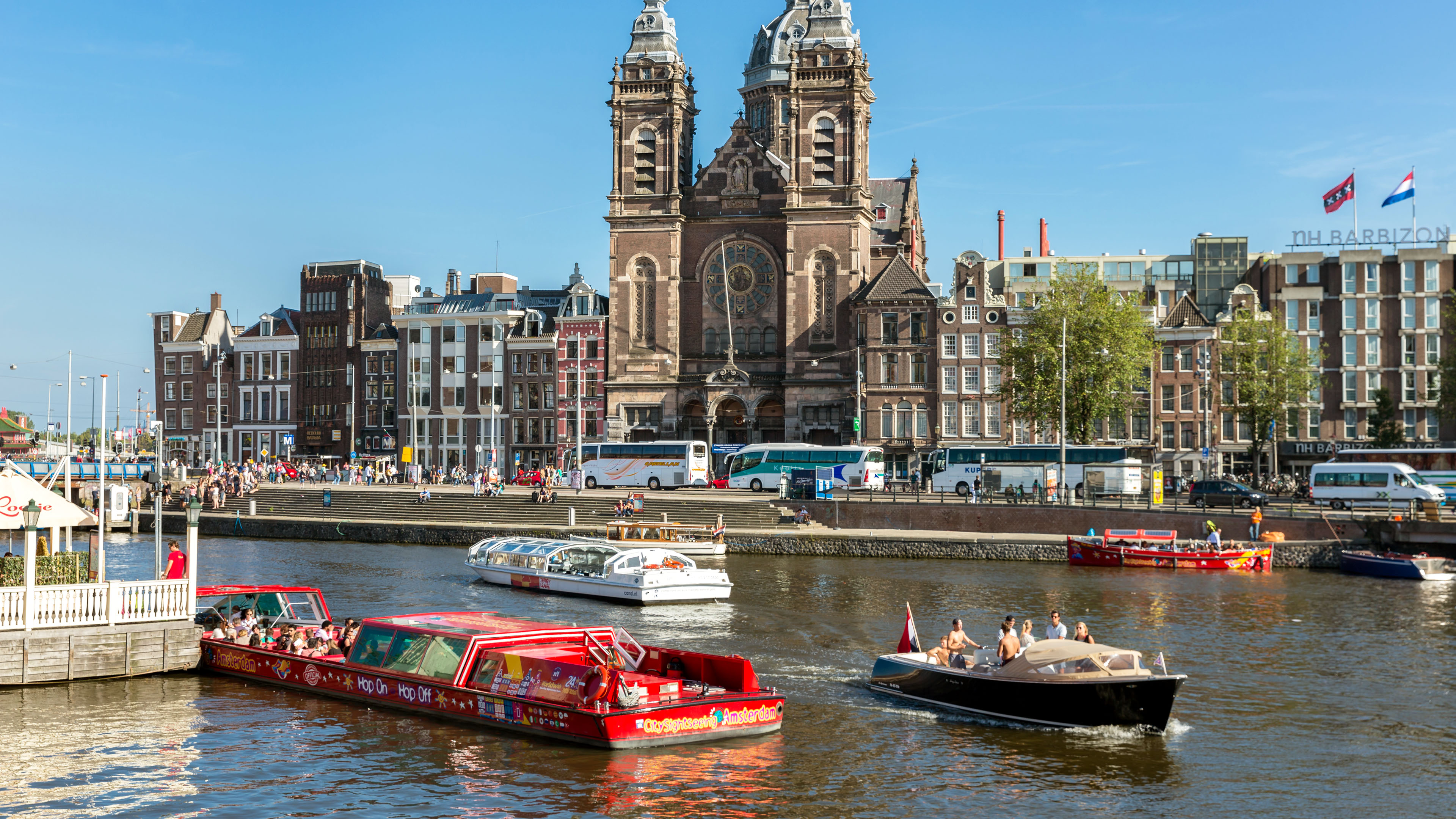
Illustration by Nico Ortega
Visitors to Johannesburg often find themselves feeling discombobulated without understanding why. Then, after a few days or so, they clock the reason: unlike the vast majority of towns and cities in the world, there is no substantial body of water in the city. Johannesburg only exists because gold reserves were discovered there in the late 19th century. Water was an afterthought.
The fact is that people are attracted to water for both practical and sentimental reasons and waterways came to be used for far more than merely a source of drinking water. They were arteries that allowed for the movement of goods and people, supporting cities’ economic functions. In recent decades, however, many cities turned their backs on their waterways and instead concentrated traffic on ever more congested streets.
Today, that is starting to change for both environmental and practical reasons, with cities starting to embrace waterborne transport modes. So, how are cities again making greater use of their waterways? And what are the practical benefits that can be achieved?
Few cities are as famed for their waterways as Amsterdam. Netherland’s biggest city, after all, is replete with canals at every turn. It is fitting, therefore, that it is at the forefront of efforts to reenergise waterways by making use of cutting-edge digital technology. Most prominently, the city has been working on its so-called Roboat project, which aims to boost urban waterborne mobility and transportation through the use of autonomous vessels for both goods and passengers.
After six years of research by the Massachusetts Institute of Technology (MIT) and Amsterdam Institute for Advanced Metropolitan Solutions, Roboat transitioned into a spin-off company in February this year. The idea is to alleviate pressure on Amsterdam’s busy city centre roads and revitalise the canals. However, while the city is an ideal testbed for the technology – it has 165 canals and about a quarter of its surface area is water – the hope is that Roboat will ultimately go global.
“Whereas most autonomous shipping focuses on more straightforward trajectories, Roboat technology is designed to navigate complex urban and inland waterways, such as the Amsterdam canals, which makes Roboat technology relevant for cities and harbour areas worldwide,” says Stephan van Dijk, director of innovation at Roboat. “Combined with its ability to perform its tasks 24/7, Roboat technology can add great value to safer and more sustainable transport on the water in the city.”
Ger Baron, director, digital and innovation, at the City of Amsterdam, agrees. “Roboat is about reinventing mobility on the water,” he says. “The applications are potentially limitless, from waste collection to supporting quay restorations, but in the end it makes mobility on the water safer, flexible and efficient.”
Blue highways
Amsterdam isn’t alone. In November, New York City Department of Transportation commissioner Ydanis Rodriguez and Economic Development Corporation president and CEO Andrew Kimball announced that the agencies are seeking creative solutions to move more freight by waterways instead of roadways. This project has been called the Blue Highways initiative.
At this stage, the agencies are still in the information gathering stage, seeking “feedback from the private sector on industry challenges and opportunities, including ways to implement and support businesses to engage in waterfront freight operations and spark new economic development opportunities”, they said in a joint statement.
However, the direction of travel is already pretty clear. The agencies say that they are looking to explore ways to “modernise existing marine infrastructure, expanding access to the waterfront and helping to develop a sustainable model for last mile deliveries”. Marine freight vessels and low- and zero-emission vehicles like cargo bikes and electric vans are what they have in mind.
“New York is a city of islands, but its waterways carry less than 10% of freight,” says deputy mayor for operations Meera Joshi. “Through this initiative we're aiming to increase the cleaner movement of goods across the city. The private sector is essential to achieving an impactful modal shift.”
Rodriguez adds: “Reactivating our waterways for the movement of goods can help reduce the city's reliance on large trucks, cutting down on congestion and emissions. With a city coastline stretching longer than Miami, Boston, Los Angeles and San Francisco combined, there is an opportunity to develop a regional freight network to move our goods more safely and efficiently.”
Take me to the river
Arguably, London is at a more advanced stage than New York. There, the Thames Estuary Growth Board (TEGB) has been looking into how to make better use of the Thames for several years now, taking inspiration from the likes of Amsterdam and Paris. “It's a huge work programme for us,” says TEGB chair Kate Willard. “At one point, you could cross the Thames without needing a bridge because there were so many ships on the river that you could just jump from deck to deck. It was a phenomenally productive river.”
The idea is to get back to that level of productivity. At the moment, the Thames is underutilised, with few freight movements taking place and the Thames Clipper service providing an irregular if exhilarating public transport service. According to Willard, the benefits of making more journeys of whatever type by river would be transformational.
“We know that we need to be moving white vans off the road as it’s really important to clean up the air,” she says. “But it’s important not just for us in terms of the decarbonisation of transport; it’s also good for business. If you think about Amazon, for example, they have no way of anticipating how long it will take to deliver your parcel if you're in central London.
“They do not know what the traffic conditions are unless they are driving at midnight. On the river, you can time your delivery much more accurately.”
There are significant challenges to be overcome, however, not least in terms of infrastructure. After all, the decline in the use of the river means that investment in piers, for example, has not been maintained over the decades. “We’re looking at the infrastructure that will be required to really increase the amount of freight that is carried on the Thames,” says Willard. “There are important requirements, particularly with regard to the central London piers and making sure that they will be fit for purpose in terms of passengers and freight.”
One option that is being explored is to develop modular, floating pontoons to complement the existing infrastructure. That makes sense in several ways. For instance, the hope is that they would be less expensive to install and maintain than traditional piers. Moreover, everyone knows that demand for land in London is incredibly competitive, meaning that if you can effectively ‘create land’ by moving it over water, you will be able to save a great deal of time and money.
“The cost and availability of land is a real issue,” says Sam Boyd Williams, a director at consultancy WSP, which is working closely with TEGB. “So, what we have suggested is that the value of the river is space itself and talked about the floating solution. Whatever you do with freight, you need space at both ends. It isn’t such an issue out in the estuary but at some point you need get into central London.”
Then there is the fact that the Thames only gets you so far. When it comes to freight, goods will still need to be moved from their disembarkation point on the river to wherever their ultimate destination happens to be. It’s something that TEGB has been thinking about. “We're looking at a 2km stretch inland from any of the freight drop-offs,” says Willard.
“After that, the journeys will be made by e-bikes and e-cargo bikes. What's quite interesting about that is it doesn’t require new technology or any kind of significant transformation. It's done using existing technology and existing modes of transport. There needs to be the greening of the maritime vessels, but that’s something that is relatively uncomplicated.”
Now, TEGB believes that it’s time to move from theory to delivery and Gyula Törzsök, portfolio director at the board, says that a significant rollout could begin in the second half of 2025, although he admits there are a lot of moving parts. “The main problem is that from day zero there needs to be sufficient scale in place that will make it viable,” he says.
“We can really only operate this with a commercial mindset, so what we have to do is secure those type of partners who are able to deliver that scale, which has already been shown to be achievable. I think scalability will be super critical.”




